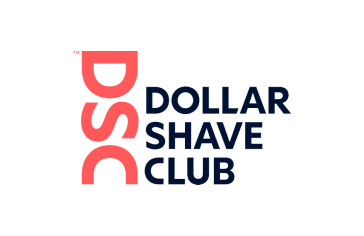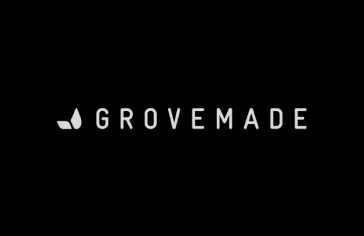
A well-designed website is crucial for small businesses looking to establish an online presence, attract new customers, and build credibility. Your website often serves as the first impression potential customers have of your business, so it’s essential that it reflects your brand well and meets the needs of your audience. In this guide, we’ll explore the best practices for small business website design and provide examples to inspire you.
Best Practices for Small Business Website Design
-
Clearly Define Your Purpose and Audience
Before you start designing, it’s important to understand the primary purpose of your website. Are you looking to sell products, generate leads, or provide information about your services? Understanding your website’s goals and your target audience will help you design a site that meets your business objectives and resonates with your visitors.
-
Keep the Design Simple and Clean
Simplicity is key in web design, especially for small businesses. A clean, uncluttered layout helps users focus on your content and calls to action. Avoid overloading the site with too many elements, such as excessive graphics, animations, or text. A minimalist approach with plenty of white space can make your website look more professional and easier to navigate.
-
Prioritize User Experience (UX)
User experience should be at the forefront of your design strategy. Ensure that your website is easy to navigate with clear menus, a straightforward structure, and intuitive design elements. A well-designed UX will help users find the information they need quickly, reducing bounce rates and increasing conversions.
-
Make Your Website Mobile-Friendly
With a significant portion of web traffic coming from mobile devices, having a mobile-friendly or responsive design is essential. A responsive website adapts to different screen sizes and orientations, ensuring that users have a consistent experience whether they’re on a desktop, tablet, or smartphone.
-
Optimize for Speed
Website speed is crucial for user experience and search engine optimization (SEO). Slow-loading websites can frustrate users and lead them to leave your site. To optimize for speed, compress images, leverage browser caching, and minimize the use of heavy scripts.
-
Include Clear Calls to Action (CTAs)
Effective calls to action guide users toward completing a desired action, such as making a purchase, signing up for a newsletter, or contacting your business. Make sure your CTAs are clear, compelling, and easy to find. Use contrasting colors and bold text to make them stand out on the page.
-
Showcase Your Brand’s Personality
Your website should reflect your brand’s identity and values. Use colors, fonts, and imagery that align with your brand’s personality. Include an “About Us” page to tell your story and connect with your audience. Authenticity can help build trust and encourage customer loyalty.
-
Incorporate Testimonials and Reviews
Customer testimonials and reviews are powerful tools for building credibility and trust. Including testimonials on your website can provide social proof and help potential customers feel more confident about choosing your business. Make sure these are visible on key pages, such as the homepage and product or service pages.
-
Optimize for Search Engines (SEO)
SEO is crucial for driving organic traffic to your website. Optimize your website for search engines by using relevant keywords, creating high-quality content, and ensuring that your site is technically sound (e.g., fast loading, secure, mobile-friendly). Good SEO practices will help your website rank higher in search engine results, increasing visibility and attracting more visitors.
-
Make It Easy to Contact You
Your website should make it easy for visitors to contact you. Include a clear contact page with your phone number, email address, and a contact form. If you have a physical location, include a map and address. Providing multiple ways to reach you can improve user experience and help convert visitors into customers.
Examples of Small Business Website Designs
Here are some examples of small business websites that effectively utilize these best practices:
-
Warby Parker

Warby Parker is an eyewear company with a clean and minimalistic website design. The site features a straightforward navigation menu, plenty of white space, and high-quality product images. The CTAs are clear and stand out against the background, making it easy for users to find what they need. Warby Parker also includes customer reviews and a clear return policy, which helps build trust.
𝗩𝗶𝗲𝘄 𝗠𝗼𝗿𝗲
-
Moo

Moo, a company specializing in business cards and print products, has a website that is visually appealing and easy to navigate. The design uses bright colors and bold typography to create a fun and engaging experience. The site is also optimized for speed and includes clear CTAs, guiding users to start creating their custom products.
𝗩𝗶𝗲𝘄 𝗠𝗼𝗿𝗲
-
Bite Toothpaste Bits

Bite Toothpaste Bits features a clean and modern design with plenty of white space and high-quality images. The site includes clear CTAs, social proof in the form of customer reviews, and an easy-to-use navigation menu. Bite also focuses on sustainability, which is highlighted throughout the site to appeal to environmentally-conscious customers.
𝗩𝗶𝗲𝘄 𝗠𝗼𝗿𝗲
-
Dollar Shave Club

Dollar Shave Club’s website is a great example of simplicity and effectiveness. It uses bold typography and a straightforward layout to communicate its value proposition clearly. The CTAs are prominent and guide users toward signing up for the service. The site also includes engaging videos and testimonials to build trust and demonstrate the product’s value.
𝗩𝗶𝗲𝘄 𝗠𝗼𝗿𝗲
-
Bliss

Bliss, a skincare brand, has a website that combines bright, vibrant colors with high-quality images to create an inviting atmosphere. The design is simple and user-friendly, with clear navigation and easy-to-find CTAs. Bliss also includes customer reviews and product ratings, which help build credibility and encourage purchases.
𝗩𝗶𝗲𝘄 𝗠𝗼𝗿𝗲
-
Lemonade

Lemonade, an insurance company, uses a minimalistic design with a strong focus on user experience. The site features a straightforward layout with clear CTAs and engaging copy. Lemonade also includes a blog and FAQ section to provide valuable information to users and build trust.
𝗩𝗶𝗲𝘄 𝗠𝗼𝗿𝗲
-
Grovemade

Grovemade, a company specializing in handcrafted wooden products, has a website that reflects its brand’s craftsmanship and quality. The design is clean and simple, with beautiful photography that showcases the products. The site includes clear CTAs and an easy-to-use navigation menu, making it easy for users to find what they need.
𝗩𝗶𝗲𝘄 𝗠𝗼𝗿𝗲
-
Flint and Tinder

Flint and Tinder, a clothing brand, uses a simple and clean design to highlight its products. The site features high-quality images, clear CTAs, and plenty of white space. Flint and Tinder also include customer reviews and detailed product descriptions to help users make informed purchasing decisions.
𝗩𝗶𝗲𝘄 𝗠𝗼𝗿𝗲
-
Great Jones

Great Jones, a cookware company, has a website that combines vibrant colors with high-quality images to create an engaging experience. The design is simple and easy to navigate, with clear CTAs that guide users toward purchasing products. Great Jones also includes customer reviews and a blog with helpful cooking tips.
𝗩𝗶𝗲𝘄 𝗠𝗼𝗿𝗲
-
Farmgirl Flowers

Farmgirl Flowers uses a clean and modern design with plenty of white space and high-quality images. The site features clear CTAs, easy navigation, and a blog with helpful tips and advice. Farmgirl Flowers also includes social proof in the form of customer reviews, which helps build trust and credibility.
𝗩𝗶𝗲𝘄 𝗠𝗼𝗿𝗲
Wide-Up:
A well-designed website is a powerful tool for small businesses looking to establish an online presence and connect with customers. By following these best practices and drawing inspiration from successful examples, you can create a website that effectively showcases your brand, engages your audience, and drives conversions. Remember to keep your design simple, prioritize user experience, and continuously optimize your site to ensure it meets your business’s and your customers’ needs.









